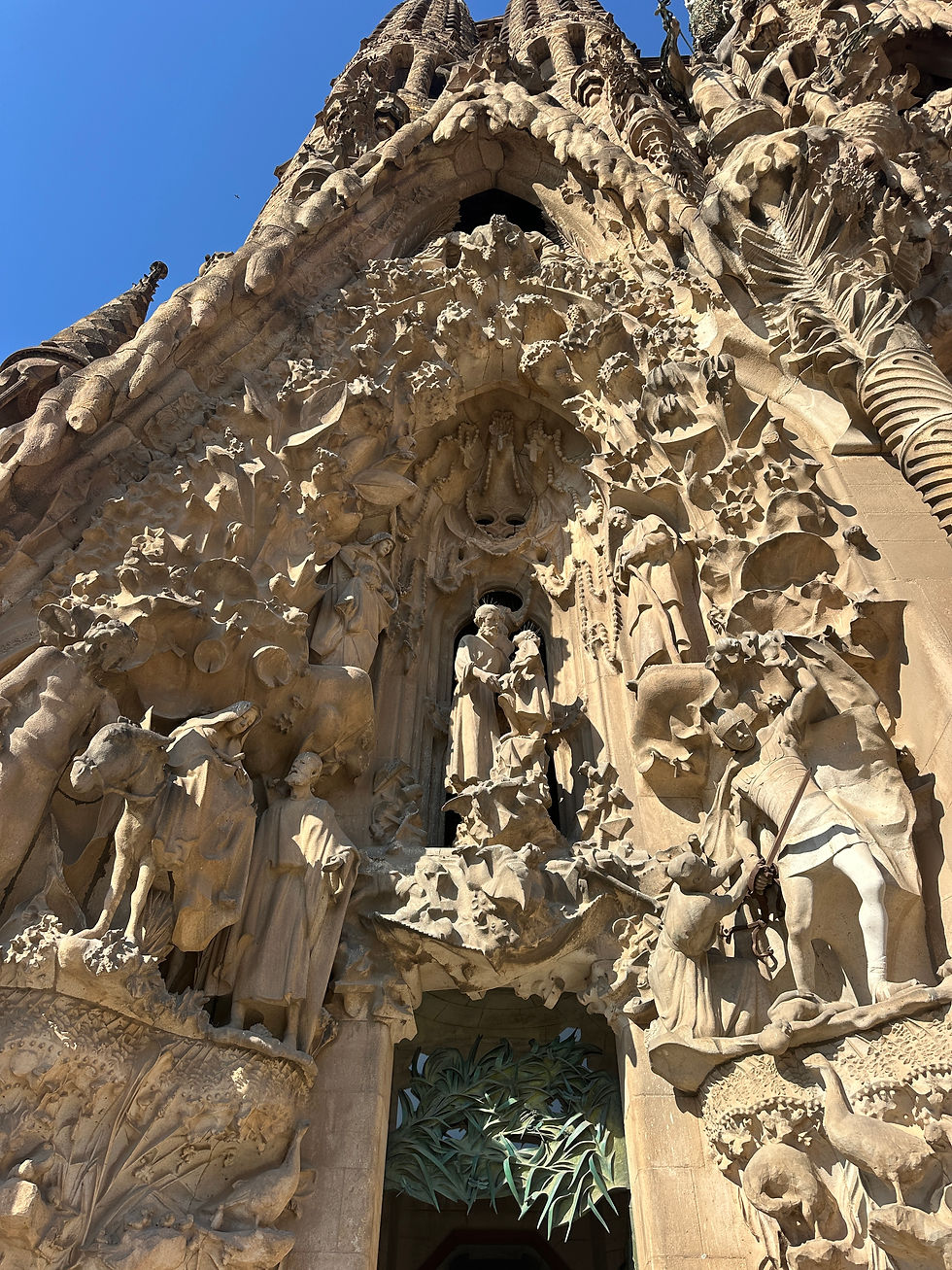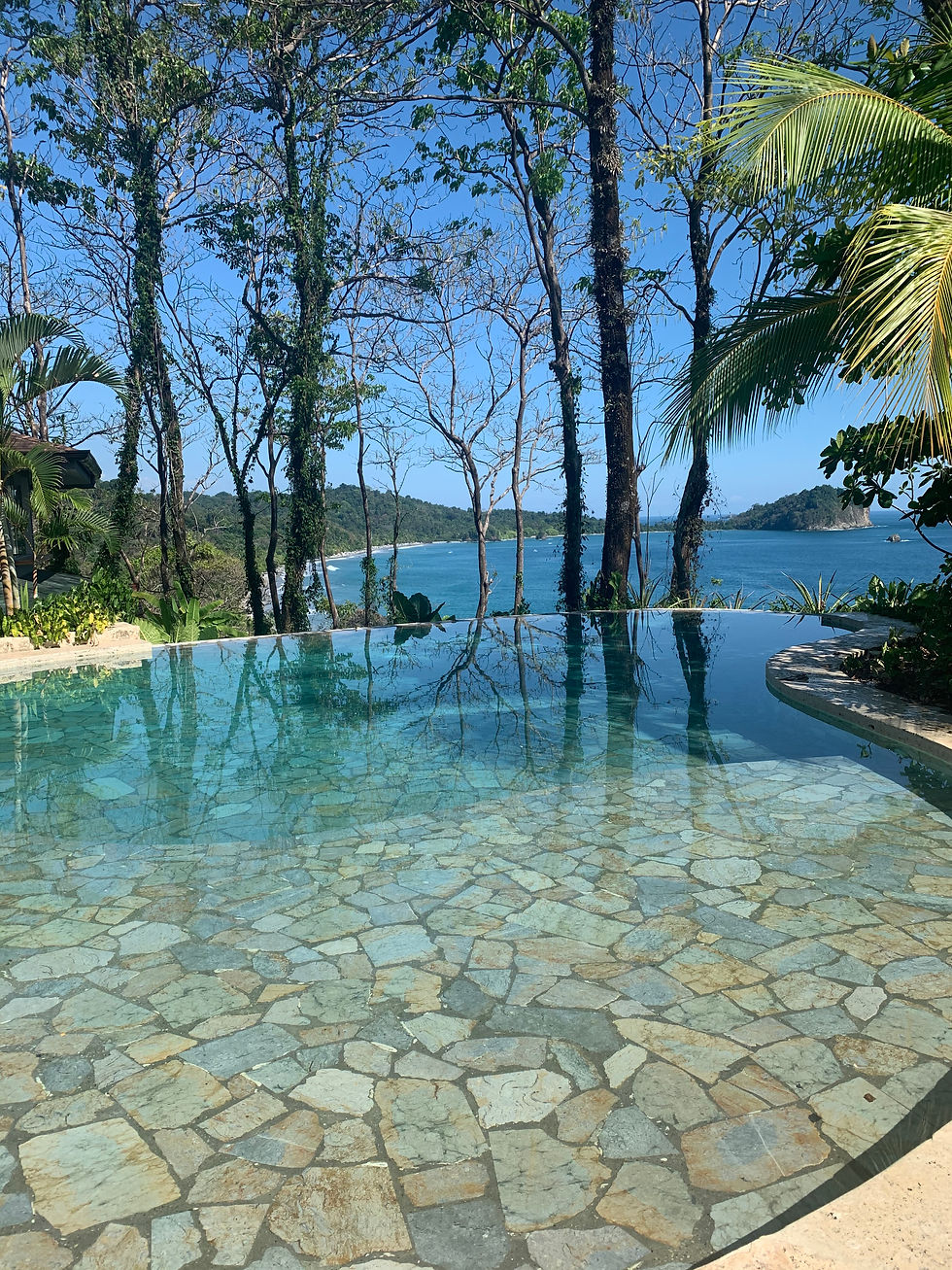Discovering Barcelona's Crown Jewel: The Sagrada Familia
- Amy Harris

- Jul 25
- 4 min read
No trip to Barcelona is truly complete without standing in the shadow of one of the world’s most breathtaking landmarks: the Sagrada Familia. It’s the kind of place that leaves you speechless—even if you’ve seen a hundred photos, nothing prepares you for the real thing.
This isn’t just another church or architectural attraction. The Sagrada Familia is Barcelona’s beating heart—a symbol of the city’s artistic soul, spiritual roots, and love of bold, imaginative design.

A Church Built for the Ages
Construction began in 1882, and yes, it’s still not finished. That might sound crazy—until you realize this basilica isn’t being built for this generation, or even the next. It’s a project that embodies patience, artistry, and faith on an almost impossible scale.
The mastermind behind it all was Antoni Gaudí, Barcelona’s most legendary architect. He took over the project in 1883 and completely reimagined it, blending Gothic tradition with natural forms, geometry, and deep Christian symbolism.
Tragically Gaudi died in 1926 at the age of 73 when he was hit by a tram while crossing the street, but his dream lives on—carried forward by generations of architects, sculptors, and stonemasons.
What Makes it So Special?
Gaudi was a deeply religious man and that is reflected in every detail of his plans.
Walking up to the Sagrada Familia, the first thing you’ll notice is the facades. Each tells a different part of Christ’s life:

The Nativity Façade is joyful and ornate, full of life and detail and is a reflection of the birth of Christ
The Passion Façade is minimalist, angular, and dramatic—designed to evoke emotion.
The Glory Façade, still under construction, will represent heaven and spiritual ascension.


Step inside, and it’s like entering a forest of stone. Gaudi designed the columns to mimic trees, with light pouring through the stained-glass windows like sunlight through leaves. Whether you’re religious or not, the space has an undeniable sense of peace and awe. He believed that nature offered inspiration for art and his architectural designs and style are a reflection of things found in nature. He stated, "The big book, always open and we must strive to read, is that of nature."
Examples of Nature's influence within the Sagrada Familia
Tree-like Columns: The columns in the central nave resemble a forest, branching to support the roof, and transferring loads efficiently like tree trunks and branches. Double-twist columns are inspired by plants providing strength and stability.
Sequoia-Inspired Roots: The bases of columns in the Passion Façade resemble giant sequoia roots, efficiently transferring forces into the ground and stabilizing the structure.
Hyperboloid Windows and Vault: These geometric forms, found in nature, diffuse natural light, creating the effect of sunlight filtering through a forest canopy.
When completed there will be 18 towers representing:
The 12 Apostles
Currently, 8 out of the 12 Apostle towers are complete. These are the four Apostle towers on the Nativity facade and the four on the Passion facade. The Apostle towers range from 90 to 112 meters in height and are dedicated to the Apostles James the Greater, Simon Peter, Andrew, John, James, Thomas, Philip, and Bartholomew
The 4 Evangelists
These towers, representing Matthew, Mark, Luke, and John, were completed in late 2023. They stand at 135 meters tall and are crowned with sculptures of their traditional symbols: an angel for Matthew, a lion for Mark, an ox for Luke, and an eagle for John
The Virgin Mary
This tower was inaugurated in December 2021. It is 138 meters tall and topped with a large, 12-pointed illuminated crystal star
And at the very center: Jesus Christ, whose tower will soar 172.5 meters, making it the tallest church in the world, it will be crowned with a giant cross.
Interesting facts:
In 2010, the Sagrada Família was consecrated as a minor basilica by Pope Benedict XVI. It’s not just a tourist attraction; it’s a place of worship, meditation, and inspiration.
Millions visit every year to marvel at its design, but many leave with more than just great photos—they leave with a sense of wonder
The basilica has been completely funded by donations, so when you visit, you are contributing to it's beauty and completion.
UNESCO World Heritage Site: It was recognized by UNESCO in 2005 for it's unique architectural and artistic value
There is a school on site: Gaudi had a school built on the grounds for the children of the workers.
It was planned to be completed in 2026 but that date has been delayed largely due to the pandemic. However, the tower of Jesus Christ is still on track to be completed by 2026 while the overall building will not be finished until early 2030's.
Gaudi's final resting place - the architect is buried in the basilica's crypt.
A Must-See for Every Traveler
Even if you’re not usually “into churches,” the Sagrada Familia is in a league of its own. It’s a living piece of history—a work of art that’s still growing, still evolving, and still capable of leaving travelers in awe.
Barcelona has many treasures, but the Sagrada Familia is the kind that stays with you long after your trip ends.
Tips for Visiting
Book in advance: The Sagrada Familia is one of the most visited sites in Europe - tickets can sell out quickly, especially in high season. (May - September)
If you’re up for it, book a ticket that includes access to the towers—it’s absolutely worth the extra euros
Go early or late afternoon: For fewer crowds and to see the sunlight streaming through the stained glass
Go with a guide, we did and it was well worth the knowledge she provided of the hidden symbolism and history throughout the basilica. You can also choose to do the audio guide if you go on your own.
The Sagrada Familia isn't just a building; it's a testament to patience, vision, and especially faith. It pushes the limits of what architecture can do and it reminds us that sometimes, beauty is worth the wait.
Ready to experience it for yourself?
Pack your curiosity, charge your camera, and let Barcelona’s most iconic landmark remind you what travel is all about: wonder, beauty, and stories carved in stone.





Comments